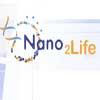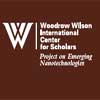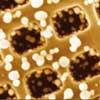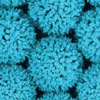Showing reports 41 - 50 of 172 in category :
| Environmentally Beneficial Nanotechnologies | |
| Source: UK Department for Environment Food and Rural Affairs (DEFRA) – Publication date: May 2007 | |
 | Defra has also commissioned research into the the policy implications of nanotechnologies that will benefit the environment. The report of the study Environmentally beneficial nanotechnologies: barriers and opportunities investigates the opportunities and potential obstacles to adoption of a number applications of nanotechnology which could be used to cut use of non-renewable energy sources and reduce greenhouse gas emissions. This report explores the application of nanoscience in the areas of insulation, photovoltaics, electricity storage, engine efficiency and the hydrogen economy. |
| Envisioned Developments in Nanobiotechnology | |
| Source: The Interdisciplinary Center for Technology Analysis & Forecasting at Tel-Aviv University – Publication date: February 2006 | |
 | A worldwide expert survey on 20 future developments in Nanobiotechnology has been conducted as part of the Foresight activity within the EU network of excellence "Nano-to-Life". 139 experts from 30 countries participated in the survey. For each development the experts assessed the likely year of realization, impact on science and technology, environment, quality of life and the labor market, and commercialization prospects in medicine, security, environment, agro-food and consumer products. |
| EPA and Nanotechnology: Oversight for the 21st Century | |
| Source: Project on Emerging Nanotechnologies – Publication date: May 2007 | |
 | As the Environmental Protection Agency (EPA) recently stated, nanotechnology has evolved from a futuristic idea to watch to a current issue to address. A new report considers various oversight tools for dealing with nanotechnology and proposes a number of action steps for government, industry, and other stakeholders. |
| EPA's Nanotechnology White Paper | |
| Source: U.S. Environmental Protection Agency – Publication date: February 2007 | |
 | EPA's Science Policy Council has issued the Nanotechnology White Paper. The purpose of the White Paper is to inform EPA management of the science issues and needs associated with nanotechnology, to support related EPA program office needs, and to communicate these nanotechnology science issues to stakeholders and the public. |
| Ethics and Nanotechnology: A Basis for Action | |
| Source: Commission de l'éthique de la science et de la technologie – Publication date: April 2007 | |
 | Ethics and nanotechnology: A basis for action is the fourth position statement issued by Commission de l'éthique de la science et de la technologie in Quebec, Canada. It consists of three chapters devoted to the scientific, legal and ethical implications of nanotechnology. In its ethical assessment of nanotechnology, the Commission is upholding the protection of health and the environment, as well as respect for many values such as dignity, liberty, the integrity of the person, respect for the person, quality of life, respect for privacy, justice and equity, transparency and democracy. |
| EU nanotechnology R&D in the field of health and environmental impact of nanoparticles | |
| Source: European Commission – Publication date: January 2008 | |
 | This compilation aims at gathering the most complete overview of past and ongoing research projects funded by the FPs, EU Member States, Candidate Countries and Countries associated to FP6 or FP7 in the area of possible impacts in health, environment and safety of nanoparticles. Being the first of its kind, this compilation has information of 106 projects. |
| European Activities in the Field of Ethical, Legal and Social Aspects (ELSA) and Governance of Nanotechnology | |
| Source: European Commission, DG Research – Publication date: October 2008 | |
 | This publication summarizes European activities in the field of ethical, legal and social aspects (ELSA) and governance of nanotechnology. This political and societal dimension of nanotechnology research is gaining importance the more nanotechnology enters the public focus, e.g. by successful product development or new research results on potential risks. ELSA of nanotechnology offer important insights to the interested public by helping to identify expectations and concerns and at the same time they are important for policy makers for responding to these needs in terms of good governance of research, including risk governance. |
| European Leadership in Nanoelectronics | |
| Source: MEDEA+ – Publication date: June 2004 | |
 | This document reviews past successes and the scope of the future commitments necessary for continued European leadership. It outlines forms of co-operation, such as public-private partnerships, that are necessary to achieve stated goals. |
| European Nanotechnology Infrastructure and Networks | |
| Source: Nanoforum – Publication date: July 2005 | |
 | This report details the numbers of Nanotechnology and Nanoscience (N&N) infrastructure centres and networks within the EU and associated states. Names of centres and networks with website details and brief descriptions are included along with an introduction to N&N research and development in each country. For summary charts, the following broad categories have been used: all technologies; nanomaterials; electronics and systems; fundamental research; nanobiotechnology; analytical and diagnostics; engineering and fabrication; energy. |
| European Nanotechnology Landscape Report | |
| Source: ObservatoryNANO – Publication date: November 2011 | |
 | The FP7 ObservatoryNANO project has undertaken to provide policy makers at all levels, from local governments up to the European Commission and European Parliament, with an overview of the nanotechnology landscape in Europe. This has involved monitoring of new technology developments and their market impacts through desk research and extensive expert engagement together with a company survey to identify and gather information on European nanotechnology business activity. The survey has built upon the patent, publication, and funding analysis that has been ongoing since the project?s inception in 2008. It already includes direct input from over one hundred nanotechnology businesses across Europe, as well as basic data on over 1500 nanotech companies identified by the ObservatoryNANO through objective criteria. |
